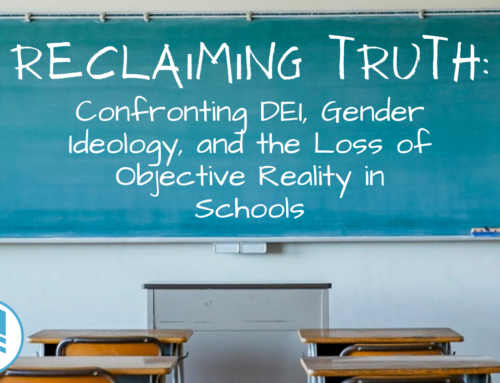
The world of education is brimming with cliches.
How many teachers have received a mass-produced mug with the words, “A teacher takes a hand, opens a mind, and touches a heart?” Another popular quote is, “The best teachers show you where to look but don’t tell you what to see.”
Calendars, handprint wall art, and homemade cards carry phrases like these, all given with sincere appreciation and love.
But why?
Why are teachers given such poetic, heartwarming gifts? The short answer is that teachers have a meaningful influence on their students’ lives.
“Throughout my years of education, I have had many awesome teachers….I will forever take with me the experiences I had with my wonderful 3rd-grade teacher,” Alyssa Marie Bartlett of The Odyssey remembers. “Not only did he teach me the basic 3rd-grade lessons that were mandatory to teach, but he has also taught me how to become the best teacher I could be for my future students.”
It’s heartwarming to imagine all of the outstanding teachers and their positive influence…but the reality is that teachers can have negative impacts as well.
Not only will a bad teacher influence classes full of kids for years to come, but poor instruction strategies create immediate consequences inside the classroom.
EducationWeek notes that a student spends up to 1,000 hours with their teacher every year. Imagine the profound impact of 1,000 hours of influence on a student!
Academic Approach examines these consequences a little bit more closely. “In our work with students, we know how important the relationship is between a teacher and a student; students spend an enormous amount of time with the teachers in their lives. A positive relationship can be essential to becoming a life-long learner, but a negative relationship can have serious long-term effects on a student’s engagement in learning and school.”
Today, we’ll examine how teachers can unfavorably affect their students’ success. Even good teachers can unwittingly limit their students academically. There are a few ways this can happen:
1. Neglecting Student-Teacher Relationships
Every teacher hopes to encourage their students to be the best they can be. However, if a teacher neglects to develop a relationship with their students, they may be undermining their own efforts.
According to Waterford.org, chronic absenteeism is a problem in today’s schools—and this issue is only getting bigger. It’s difficult to form relationships with students who tend to miss their classes, but Waterford suggests that finding ways to establish that relationship despite the logistical obstacle could go a long way toward student success.
“Building rapport with your students and establishing yourself as their mentor is an excellent way to combat chronic absenteeism,” Waterford explains. “Students are more motivated to attend classes if they know their teacher cares about them and will help them succeed. And by improving school engagement, these relationships can also improve academic achievement.”
Since teacher-student relationships provide such positive impacts, teachers who prioritize other aspects of their jobs might be missing out in a big way. Graduate Programs for Educators points out that when students feel comfortable with their teacher, they’re willing to take greater academic risks.
So, how can teachers promote a student-teacher relationship that inspires their students instead of hindering them?
Graduate Programs for Educators has a few suggestions: “A positive relationship can start with a simple smile, gesture to welcome the student into the classroom. Engaging an authentic and not forced conversation between a teacher and student develops a positive relationship.”
EdWeek offers some practical ideas for communicating with your students. Ask them how they see the class and what their expectations might be. Teachers can also prepare to form appropriate relationships by researching any cultural differences in their class ahead of time. This can help avoid harmful misunderstandings and give them a basis for relating to their students.
The Odyssey Online records the experiences of aspiring teacher Alyssa Marie Bartlett, who notes the specific efforts that her 3rd-grade teacher made to initiate their relationship. When she walked in for the first time, the classroom had been decorated in a welcoming way, with an abundance of age-appropriate school-themed items, sayings, and subject-specific suggestions. Her teacher was engaging and pleasant and sought out a relationship with each student individually. Alyssa never forgot these efforts.
2. Creative “Fixes”
Sometimes, even a teacher’s best intentions can do their student a disfavor.
Stan was a student who just didn’t do well in school. His teacher, Mrs. Bartlet, wasn’t sure why he was failing her class. The school year came and went, and a disheartened Stan knew he wouldn’t pass the grade. Mrs. Bartlet hated to see him so discouraged. She felt badly and hoped that he would do better in the next grade if he could only pass this especially challenging year.
When final grades came in, Stan passed! Mrs. Bartlet made sure of it. She knew it wasn’t necessarily ethical…but she also believed that sometimes you have to color a little bit outside the box to help a student succeed.
Unfortunately, Stan’s story repeated with a new teacher the next year. And the following year, with that teacher. Tragically, halfway through high school, Stan was completely lost. Even though he had “passed” grade after grade, his well-meaning teachers had failed to give him what he really needed.
Unable to keep up with his studies after years of poor education and discouragement, Stan became a high school dropout.
When they watch their students struggle, it can be hard for teachers to “allow” them to fail. Temptations arise to give a student a helping hand, fudge this or that, or offer “tips.” While this may seem kind or helpful, teachers can unwittingly handicap their students for life.
Three all-too-common phenomena that play into this vicious cycle are grade inflation, social promotion, and teacher cheating.
“Cheating on standardized tests is not only common, it can also have long-term effects on students’ academic outcomes,” EducationWeek acknowledges. “Like social promotion, cheating to help students pass a high-stakes test can allow those who are struggling to get over procedural hurdles, like moving to the next level in school, but it can hurt them when they try to move to more difficult material later on…”
Teacher cheating is an astoundingly common issue in today’s academic climate, and it happens for a variety of reasons. Regardless of whether a teacher has selfish motivations or if they genuinely want the best for their students, this route is never helpful.
3. Reliance on the Curriculum
A sad fact in the field of education is that teachers are often rewarded and have their value measured by student test scores.
This questionable metric leads many teachers to “stick to the curriculum” and “teach to the test.”
This strategy may propel students along from grade to grade and improve the school’s standing in state and national rankings. But when teachers follow this strategy, they can short their students a great deal of valuable education.
Citing a recent study, Edutopia demonstrates that “teachers who help students improve noncognitive skills such as self-regulation raise their grades and likelihood of graduating from high school more than teachers who help them improve their standardized test scores do.” The article continues, pointing out that motivation, the ability to adapt to new situations, and self-regulation are all examples of noncognitive skills teachers might miss when educating their students.
“…while teachers have notable effects on both test scores and non-cognitive skills, their impact on non-cognitive skills is 10 times more predictive of students’ longer-term success in high school than their impact on test scores,” Education Next explains. “We cannot identify the teachers who matter most by using test-score impacts alone, because many teachers who raise test scores do not improve non-cognitive skills, and vice versa.”
When teachers can think outside the box and extend extra-curricular education to their students, it can offer life enrichment and long-term benefits. From the classroom to adulthood, non-cognitive education is unmistakably influential.
Interested in learning more about alternative success metrics for teachers and schools? Read more with our articles “Two Ways to Escape ‘One-Size-Fits-All’ Instruction” and “How Do You Measure School Success?”
4. Not Varying Teaching Style
Children come with a confusing assortment of learning needs. While some kids thrive in a typical classroom environment, others might require some creativity from their teacher to reach the same level of success as their peers.
A teacher who doesn’t utilize a variety of teaching styles may be handicapping their students without even realizing it.
Again, education major Alyssa Marie Bartlett offers her student experience as an example. “ He [my teacher] also made sure to have multiple lesson opportunities to satisfy the needs of all the different types of learners in the class. He recognized the best way each of us learned and made sure to incorporate all of our learning approaches into everything he taught. This made me enjoy learning because I understood all of the information, and it made me feel confident and intelligent.”
Teachers should seek to understand their pupils and creatively help each student understand the lesson. It often takes approaching a topic a few different ways for it to permanently stick in a students’ brain. While exclusively using only one learning style for an individual student has been disproven, educators who attempt to incorporate as many teaching styles as possible will effectively reach more of their students.
Aspiring to Inspire
Teachers have the special opportunity to influence their students for a lifetime—for good or for bad.
With creativity, observation, and a willingness to adapt, they can launch their kids into the world of knowledge in unbelievable ways.
Teachers are guardians of education. The good ones inspire their classes to thrive in their studies and make the most of their school years.
It takes extra effort—but aren’t the kids worth it?
“A good teacher can inspire hope, ignite the imagination, and instill a love of learning.”




